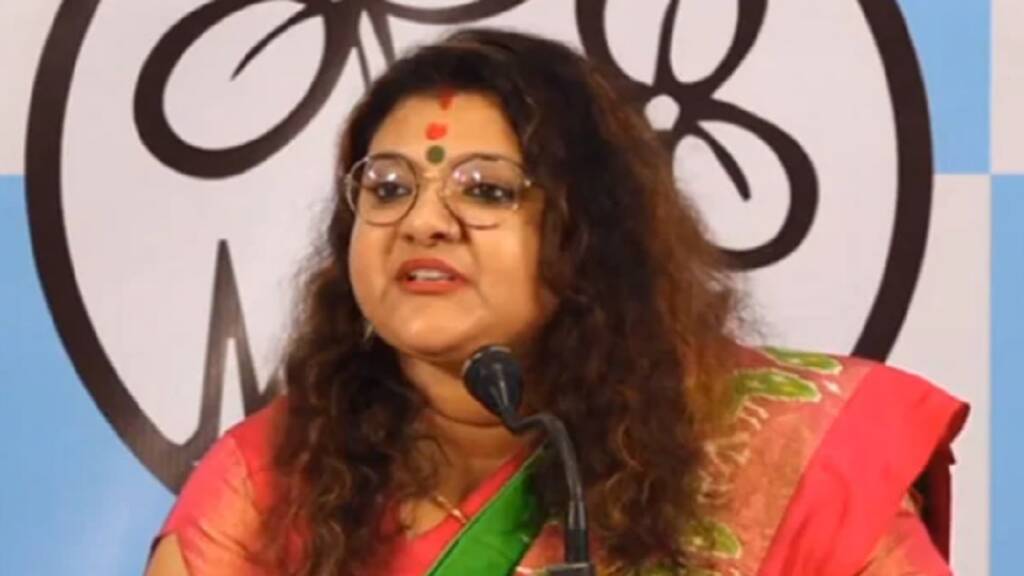Sujata Mondal Khan, a senior TMC leader, called the Scheduled Castes “beggars by nature” because they are voting for BJP in the 2021 assembly election. “The Scheduled Caste here are beggars by nature. Even after all that Mamata Banerjee did for them, they are going after the little money that BJP is offering them. They are selling their votes to the BJP,” said Khan in an interview.
The BJP uploaded a video of her interview on social media and tweeted, “Sujata Mandal of Trinamool, close to Mamata Banerjee, blatantly accuses the Scheduled Caste community of Bengal as “beggars by nature”. Can the people of Bengal give TMC a befitting reply and throw them out of power? Dalit Samaaj (Rajbanshi, Matua, Namasudra) deserves better.”
Sujata Mandal of Trinamool, close to Mamata Banerjee, blatantly accuses the Scheduled Caste community of Bengal as “beggars by nature”.
Can the people of Bengal give TMC a befitting reply and throw them out of power? Dalit Samaaj (Rajbanshi, Matuas, Namasudras) deserves better. pic.twitter.com/bJT4acPiCN
— BJP West Bengal (@BJP4Bengal) April 10, 2021
In the name of casteless politics, the political parties in West Bengal marginalised the Scheduled Castes. Now that the people from these communities are voting for the BJP, the TMC leaders are calling them beggars.
The facade of casteless politics changed after the BJP started making inroads in the state. The party, with the organisational strength of RSS, worked tirelessly in the tribal and rural areas of the state, where the majority of the population is from lower castes and scheduled tribes.
In Bengal, BJP’s prime voter base consists of OBCs, SCs and STs. Riding on the popularity among these communities, the party managed to win 18 seats out of 42 seats in the 2019 general elections in West Bengal. The constituencies that the party majorly won in 2019 were rural – primarily in the Western and Northern regions of the state.
The BJP has wooed the voters from the OBC, SC (Mahishyas, Tamus, Sahas, and Telis, Sadgops, and Namsudras) and ST communities, who constitute above 50 per cent of the state’s total population, and is mainstreaming leaders from these communities.
In the name of casteless politics, the politics of West Bengal had been dominated by the Bhadralok Community, which constitutes three upper castes- Brahmin, Baidya and Kayastha. These castes account for just 20 per cent of the state’s total population. But, all the CMs of the state – whether of CPM, Congress or TMC – have been from the Bhadralok community. OBCs, SCs and STs never had a say in the politics of Bengal.
After the Mandal Commission report suggested a quota for Other Backward Classes, the then CM of West Bengal, Jyoti Basu said, “West Bengal has only two castes- rich and poor.” The Communists never realised the peculiar nature of Indian society where caste matters more than the class, and therefore, the politics of the state remained in Bhadralok elitism.
Read More: ‘No caste, just class in Bengal’- the assumption that turned the tide against Mamata in Bengal
Since the early 2010s, BJP has been tirelessly working, especially in the OBC and ST-dominated areas of West Bengal. Dilip Ghosh, who comes from the Sadgop caste of the Jungle Mahal region-one of the backward regions of West Bengal, was appointed as the President of West Bengal BJP in 2015.
In the 2021 Assembly Elections, the people from the non-Bhadralok community will most likely reclaim their rightful place in Bengal politics and this will change the image of the state forever. The previous left-front governments and the current Mamata government have destroyed the economy of the state, therefore, a regime change is necessary to put it back on the path of growth. Only a regime change can bring back the golden days of West Bengal and the BJP is making sure of that.
